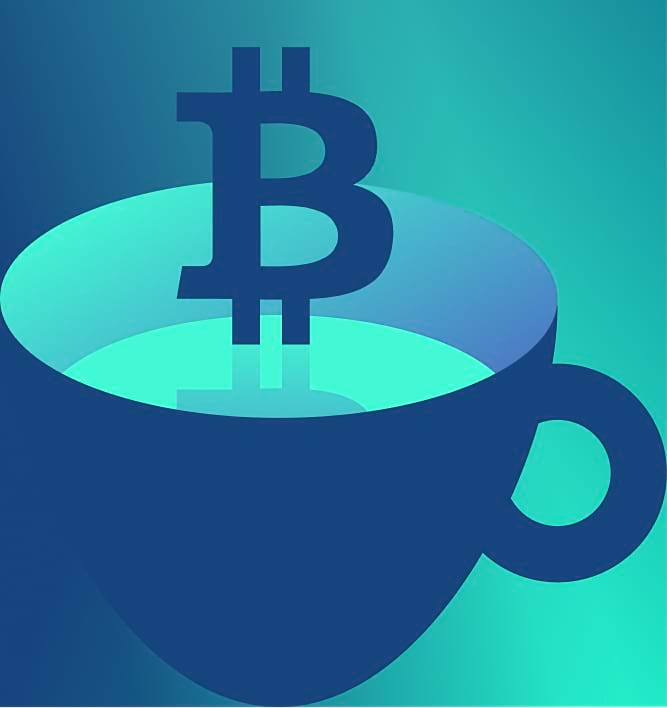
Markets
Continued strength in the US dollar proved a headwind for Bitcoin and crypto markets over the last month, with both volatility and the total market cap of all cryptoassets largely flat at $1.1 trillion amid tight liquidity.
However, revenues generated by the two largest blockchains by market cap rose substantially in May due to increasing user bases and new technological developments, most notably Ordinals for Bitcoin, and increasing adoption for Ethereum enterprise solutions.
Macro
The main macro force driving cryptoasset markets in May remained the ongoing debate over the US debt ceiling and the possibility that the world's second-largest economy could default on its obligations.
The United States reached its $31.4 trillion debt ceiling on 19 January 2023. This is the amount that Congress apportions to agencies to pay the government's bills. Treasury Secretary Janet Yellen warned lawmakers at the turn of the year that the US, its partners and the global economy would face “substantial harm” if the debt limit was not raised.

An eleventh-hour deal - which was never realistically in doubt, given the debt limit had previous been raised 78 times since 1960 - was signed by President Biden on 5 June.
One point of crypto-positive news which came out of the negotiations was the dropping of the White House's proposed 30% tax on Bitcoin mining.
On 2 May President Biden released a consultation on DAME, the Digital Asset Mining Energy excise tax.
If imposed, it would have hit American cryptomining companies with a penalty equal to 30% of the cost of the electricity used in mining Proof of Work cryptoassets like Bitcoin and Litecoin.
As Blockworks reported, Republican Congressman Warren Davidson told industry insiders that the proposed tax had been blocked under the deal to extend the US debt ceiling until January 2025.
Bitcoin
Weekly revenue generated by Bitcoin network was up 249% year over year as Ordinals reached a tipping point. Ordinals inscribe individual satoshis - which are the smallest unit of a bitcoin - with text, audio, video or images, creating non-fungible assets on the network for the first time.
The development remains controversial among Bitcoin users as its critics say it takes focus away from Bitcoin's original intent as peer-to-peer money.
Given their nascent market size and structure, Bitcoin Ordinals have been largely traded OTC and have required specific wallet architecture to buy and sell these assets.
It is only in the last few weeks that Ordinals have appeared on the major NFT marketplaces.

The benefits to Ordinals are that their rapid rise has enriched Bitcoin miners by adding more demand for Bitcoin blockspace.
Bitcoin transaction fees hit a two year high in May at 29.57% of total rewards, as miners collected an ever larger proportion of their income from transaction fees.
The last time transaction fees were this high was 2017, when Bitcoin and crypto were in the midst of a huge bull run, with institutions making their first real moves into the space.

Since 2020, Bitcoin miners have been producing around 900 BTC per day, in line the network's blocks being confirmed once every 10 minutes, and a block reward of 6.25 BTC.
The other major revenue generator for miners is transaction fees. With block rewards scheduled to be cut in half in the August 2024 Bitcoin halving, fees will become increasingly important for mining companies and their topline revenue.
Ethereum
Ethereum staking hit a new high watermark in May, with the total supply of ETH staked on the network jumping from 14% to nearly 20%. This indicates that $46bn of ETH is now deposited on the yield-bearing network, a two-fold increase on the same period last year.
The ability to withdraw staked ETH from the blockchain was enabled by the Shapella hard fork on 12 April. This was the final piece of the puzzle switching Ethereum from a Proof of Work blockchain supported by miners, to a Proof of Stake blockchain supported by validators, a process begun by The Merge in September 2022.

Despite early fears of significant sell pressure from unstaked ETH supply hitting the market, the opposite appears to be true. Certainly the mass de-risking around staking ETH - and being able to withdraw those rewards on demand - appears to have brought new participants into the picture. The total supply of ETH since The Merge has fallen by over 11,100 ETH, which puts the annual supply inflation at minus 0.43%, further improving ETH's store of value credentials.
Monthly fees jumped by 53.7% between April and May 2023, from $241m to $448m, amid climbing demand for Ethereum blockspace.

Decentralised exchange volumes have remained relatively muted in the year to date although Uniswap remains at the top of the leaderboard amid the most used Ethereum-based retail apps.
In light of the increasing quantity of ETH committed into staking contracts and the improved fee market for Ethereum with more tokens being burned, the supply of ETH available for trading in the market is becoming progressively more limited.
This ongoing supply reduction is strengthening Ethereum's long-term value proposition. The confluence of these factors demonstrates that the blockchain's fundamentals remain robust, and that it has the capacity to support ongoing growth and bolster value for stakeholders.
Altcoins
The effect of potentially positive regulatory moves was not lost on altcoin markets in May with the most obvious impact clearly felt in the ongoing case between Ripple and the SEC.
The number of daily active addresses on the Ripple blockchain spiked to its second-highest figure ever amid positivity that the regulator could lose its lawsuit.
On 22 December 2020 the SEC announced plans to sue Ripple Labs and its two most high profile execs, co-founder Chris Larsen and current CEO Brad Garlinghouse, for their part in what it alleges is an ongoing $1.3bn unregistered securities sale.
In March, the price of XRP surged after the company argued in court papers that a Supreme Court ruling supported one of its key defences in the case. In mid-May, XRP jumped again when US District Court judge Analisa Torres ruled the SEC was not allowed to seal documents related to a 2018 speech by ex-official William Hinman which suggested that ETH, the currency of the Ethereum blockchain, was not a security.

Ripple's XRP token has added more than $10bn to its market cap since the turn of 2023. If Ripple loses the case and XRP is branded a security, it would have far-reaching effects on the cryptoasset market in the United States.
Regulation
Global
Market watchdog the International Organisation of Securities Commissions (IOSCO) made headlines in May by calling for global rules around cryptoassets, urging nations to regulate the sector in line with traditional financial assets such as equities and bonds. The call was seen as an implicit criticism of the UK, whose Treasury Select Committee came under fire for proposing that cryptocurrency trading be regulated in line with gambling and casinos, instead as financial services.
The IOSCO's membership includes both two regulators who have been notably hostile to the growth and development of digital asset markets: the UK Financial Conduct Authority (FCA) and the US Securities and Exchange Commission (SEC). The IOSCO has made it clear that regulators need to do more to safeguard investors and strengthen market protections in order to foster a level playing field between cryptoassets and traditional financial markets.
Americas
In the US, the issue of support for cryptoassets is becoming increasingly bipartisan, with US presidential candidates Ron DeSantis (R) and Robert F. Kennedy Jr. (D) both voicing their support for Bitcoin.
During the Bitcoin Miami conference in May, Kennedy announced that he would accept Bitcoin donations via the Lightning Network, an upgrade for Bitcoin that allows for near-instant payment settlement. As governor of Florida, DeSantis has been particularly forceful in his support for the privacy-protecting elements of blockchain-based transactions, vowing that a Central Bank Digital Currency (CBDC) would not materialise if he were to be elected president in 2024.
His concerns over the risks of a centralised, central bank-issued digital currency were echoed in a recent survey by the Cato Institute, which showed just 16% of Americans favour a CBDC issued by the federal government.
Regulatory crackdowns and a more febrile political climate appear to be driving American innovators offshore, as illustrated by a swathe of cryptoexchange operators who have set up bases in Europe and the Middle East.
Asia Pacific
From 1 June retail traders in Hong Kong are allowed to trade crypto on licensed venues. The regulations permit crypto exchanges to offer trading services to individuals and institutions, provided they secure and adhere to licences designed to protect investors. Jurisdictions like Hong Kong are vying to lure crypto firms and investors who are hesitant about the US due to regulatory uncertainties.
Exchanges such as Huobi, OKX, and Amber Group have applied to the Hong Kong Securities and Futures Commission (SFC) for licences under the new framework.
Hong Kong's move is widely seen as a proving ground for China, raising questions over whether the notoriously crypto-unfriendly state could amend or soften its ban on Bitcoin transactions and mining in the mainland.
Europe
The EU's landmark Markets in Crypto Assets (MiCA) digital asset regulation is proving a timely reminder to regulators in individual states on what can be achieved by issuing continent-scale legislation. European Parliament President Robert Matsola formally signed MiCA into law on 31 May, in conjunction with separate anti-money laundering legislation requiring crypto providers to verify the identity of their customers when transferring funds.
The provisions of MiCA allow crypto exchanges and wallet providers to obtain a licence to operate throughout the 27-state bloc. The framework will become effective in 2024 once ratified by the legislative chambers of the member countries.
Institutional blockchain
Institutional interest in blockchain infrastructure ramped up in May with one major theme making the biggest headlines: tokenisation.
The second-oldest US bank, State Street, caught the market's attention by expressing its first serious public interest in tokenising ETFs. The statement carries particular weight because State Street is the manager of the single largest ETF in the world, the SPDR S&P 500 ETF Trust (SPY), which has a market capitalisation of almost $400bn.
If the five largest ETFs in the world were tokenised it would mean $1.4 trillion of assets would be available on the blockchain.

The benefits of tokenisation are clear, according to the Bank of New York Mellon, which made its move into crypto custody last year. The bank notes that tokenisation improves liquidity, speeds up settlement, cuts the cost of issuance and improves risk management due to the transparency of public blockchains like Ethereum.
BNY Mellon is the world's largest asset manager, with $1.9 trillion of assets under management and $46.6 trillion of assets under custody.
Professional services giant Ernst & Young (EY) on 10 May launched OpsChain ESG, built on Ethereum, “to provide a trusted platform for emissions and carbon credit traceability”.
Global blockchain lead Paul Brody has said that his team of engineers “want to be the best in the world at [building products on] Ethereum”, and doing the hard yards of blockchain development, smart contract writing and auditing appear to have paid off. EY launched its blockchain unit in 2015 and has since put a heavy focus on building privacy-protecting functionality such as zero-knowledge proofs using Ethereum and its Layer 2 scaling solution Polygon.
Recent research from Citibank suggests that tokenisation of liquid and illiquid assets could be worth as much as $4 trillion by 2030, with a growth factor of 80x expected in private markets.
Into The Metaverse
The metaverse investment theme came back to life in May supported by surging investor interest in AI and the increasingly hard-fought battle for retail supremacy between Apple (NASDAQ:AAPL) and Meta (NASDAQ:META).
The increasingly rapid adoption of, and mass public interest in large language models like ChatGPT, Google's Bard and Microsoft's Copilot means the tech sector has been the biggest winner of 2023 to date, with the S&P index up 30% this year. Financials, utilities and energy have fared the worst, with those indices down 7.2%, 8.9% and 10% in the year to date.
Tech equity funds saw their largest weekly inflows on record in the final week of May, according to Bank of America Global Research based on EPFR data.

Technology stocks witnessed $8.5bn of inflows, more than 57% of the total $14.8bn inflows into equities.
Metaverse ETFs, including ETC Group's METR, pushed to near all time highs, while in May Solana became one of the first major Layer 1s to harness AI by integrating a ChatGPT plugin for its blockchain.

Chipmaker Nvidia (NASDAQ:NVDA) is a key metaverse stock with increasingly heavy capex in digital twins and the industrial development and usage of VR and augmented reality. It wowed markets with its Q1 earnings 53% above analyst estimates, and forecast a bumper second quarter with $11bn of revenue.
Nvidia's $10,000 A100 chip has quickly become the industry standard: according to New Street Research, Nvidia currently takes 95% of the market for the graphics processors used in machine learning and AI supercomputers.
Assets in ETFs linked to the growth of AI are expected to triple to $35bn by 2030, research by Bloomberg suggests.
Meta's failures in the field of retail VR have been widely publicised with its Reality Labs division notably recording a near $4bn quarterly loss in Q1. Apple looks set to grab market share from Meta's Quest 2 headset, which has become the retail standard to beat, with the anticipated launch of the Vision Pro headset, slated for the Worldwide Developer Conference in early June 2023.
With Apple rumours running into overdrive, Meta announced the launch of Quest 3, its own mixed-reality headset. The timing of the launch notably led commentators to espouse that Apple was “living rent free in Mark Zuckerberg's head”.
WICHTIGER HINWEIS:
Dieser Artikel stellt weder eine Anlageberatung dar, noch bildet er ein Angebot oder eine Aufforderung zum Kauf von Finanzprodukten. Dieser Artikel dient ausschließlich zu allgemeinen Informationszwecken, und es erfolgt weder ausdrücklich noch implizit eine Zusicherung oder Garantie bezüglich der Fairness, Genauigkeit, Vollständigkeit oder Richtigkeit dieses Artikels oder der darin enthaltenen Meinungen. Es wird davon abgeraten, Vertrauen in die Fairness, Genauigkeit, Vollständigkeit oder Richtigkeit dieses Artikels oder der darin enthaltenen Meinungen zu setzen. Beachten Sie bitte, dass es sich bei diesem Artikel weder um eine Anlageberatung handelt noch um ein Angebot oder eine Aufforderung zum Erwerb von Finanzprodukten oder Kryptowerten.
VOR EINER ANLAGE IN KRYPTO ETP SOLLTEN POTENZIELLE ANLEGER FOLGENDES BEACHTEN:
Potenzielle Anleger sollten eine unabhängige Beratung in Anspruch nehmen und die im Basisprospekt und in den endgültigen Bedingungen für die ETPs enthaltenen relevanten Informationen, insbesondere die darin genannten Risikofaktoren, berücksichtigen. Das investierte Kapital ist risikobehaftet und Verluste bis zur Höhe des investierten Betrags sind möglich. Das Produkt unterliegt einem inhärenten Gegenparteirisiko in Bezug auf den Emittenten der ETPs und kann Verluste bis hin zum Totalverlust erleiden, wenn der Emittent seinen vertraglichen Verpflichtungen nicht nachkommt. Die rechtliche Struktur von ETPs entspricht der einer Schuldverschreibung. ETPs werden wie andere Wer



